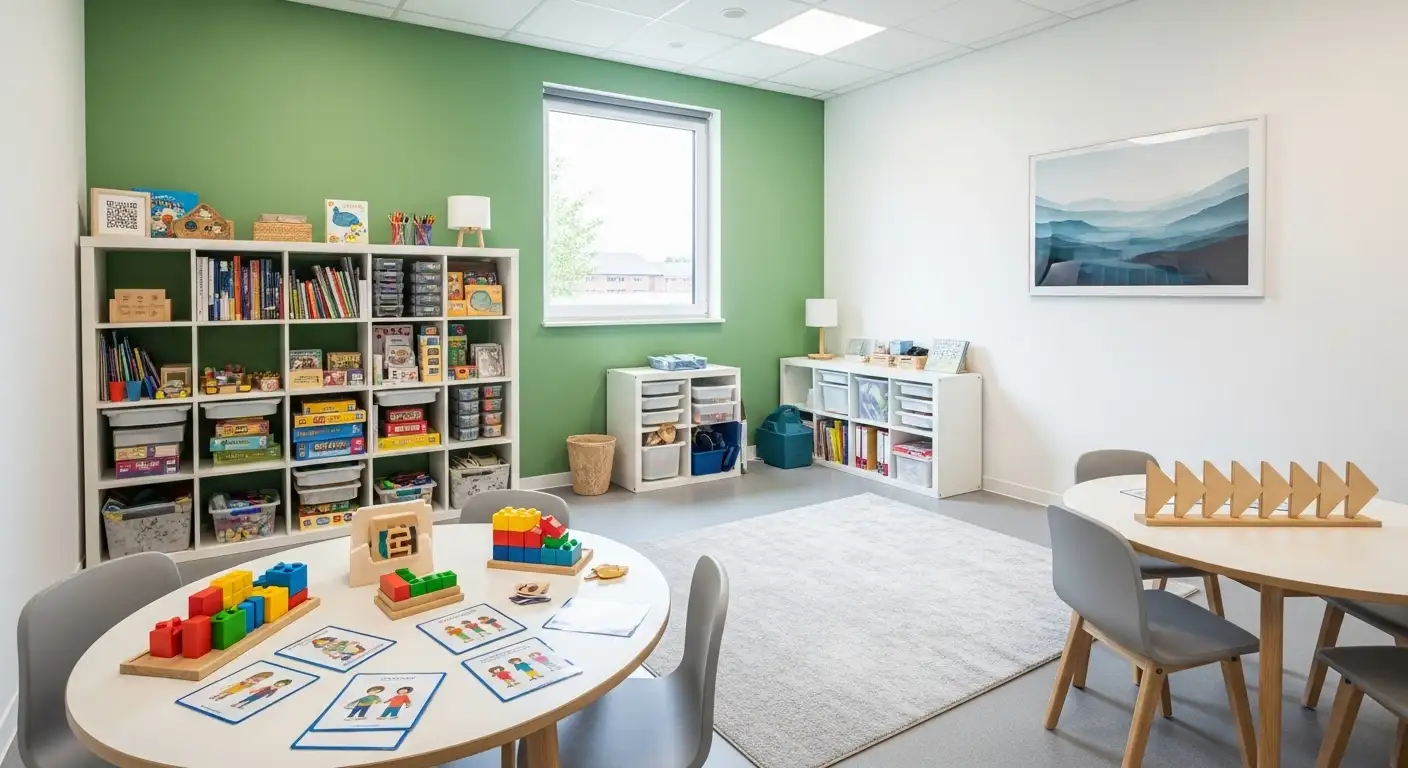
Teaching decision-making skills in autistic youth
Empowering Autistic Youth Through Collaborative Decision-Making
Understanding the Importance of Decision-Making Skills in Autism
Decision-making is a critical life skill that autistic youth often find challenging due to cognitive, sensory, and emotional differences. Teaching these skills not only fosters independence but also reduces anxiety and resistance during therapy and daily interactions. This article explores evidence-based approaches, especially within Applied Behavior Analysis (ABA) frameworks, and highlights tailored strategies that support autistic children in building self-regulation, communication, and social skills essential for confident decision-making.
Applied Behavior Analysis (ABA) Therapy: A Foundation for Skill Development
What is Applied Behavior Analysis (ABA) therapy?
Applied Behavior Analysis (ABA) therapy is a well-established approach that focuses on understanding and improving behaviors by applying learning principles. Rooted in scientific research, ABA aims to enhance essential skills like communication, social interaction, and daily living abilities while reducing behaviors that interfere with learning or social engagement. It is especially beneficial for individuals with autism spectrum disorder (ASD) and similar developmental challenges.
Core principles and techniques
ABA relies on methods such as positive reinforcement, which encourages desirable behaviors by rewarding them, and shaping, which gradually guides individuals towards new skills through small steps. Therapists analyze the environment to identify triggers and consequences influencing behavior. Various structured techniques like Discrete Trial Training and Pivotal Response Treatment help break down complex skills into manageable parts. Visual supports, checklists, and flowcharts often assist learners in practicing and understanding new skills.
Role in developing decision-making skills
ABA plays a vital role in fostering decision-making by involving children in their learning process. Techniques that offer choices and indirect language reduce anxiety and resistance, especially in kids sensitive to demands. By using Behavioral Skills Training (BST), which includes instruction, modeling, rehearsal, and feedback, ABA therapists teach practical decision-making and problem-solving skills. This approach not only builds competence but also promotes independence and confidence, helping learners navigate social situations effectively.
Benefits of ABA Therapy for Autistic Individuals

How does ABA therapy benefit individuals with autism?
ABA therapy plays a vital role in improving the skills and behaviors of individuals with autism by focusing on teaching new abilities across various areas such as communication, social interaction, self-care, and academics. By employing techniques like positive reinforcement, prompting, and analyzing antecedents and consequences, ABA therapy effectively reduces challenging behaviors while promoting positive, adaptive ones.
Customization according to child’s needs
Each ABA intervention is highly individualized. Therapy plans are carefully tailored and overseen by qualified professionals to address the unique challenges, strengths, and preferences of each child. This customization allows for flexible ABA programs that can adapt to specific needs, ensuring better engagement and outcomes.
Long-term developmental gains
Early and intensive ABA therapy has demonstrated significant benefits in developmental progress. It supports greater independence, enhanced social participation, and improved quality of life over time. By reinforcing functional communication and teaching social skills in manageable steps, ABA leads to sustained positive changes.
Overall, ABA therapy offers a collaborative, flexible approach that continues to promote the growth and well-being of autistic individuals throughout their development.
Who Provides ABA Therapy and How Is It Delivered?

Qualifications of Providers
ABA therapy is typically provided by trained professionals such as Board Certified Behavior Analysts (BCBAs) and behavior therapists. These specialists develop and implement individualized treatment plans based on each child's specific needs. Providers are skilled in applying evidence-based techniques and maintain continuous data monitoring to track progress.
Settings for Therapy Delivery
Therapy can be delivered in various environments including specialized centers, the child’s home, or school settings. Flexible approaches, tailored to the child’s preferences, are common to create an engaging learning environment. Some centers, such as those in Holyoke, offer programs with sensory-friendly areas and quiet spaces to support children’s comfort and reduce anxiety.
Family Involvement and Insurance Coverage
Family involvement is an integral part of ABA therapy. Providers often collaborate closely with parents and educators, offering training to help reinforce skills outside therapy sessions. This teamwork ensures better generalization of learned behaviors. Many ABA services are covered by insurance plans, including Medicaid, making therapy more accessible for families. Such support eases financial burdens and allows consistent participation in therapy programs.
Common Techniques Used in ABA Therapy to Support Decision-Making

What techniques are commonly used in ABA therapy?
Applied Behavior Analysis (ABA) employs several effective techniques to support decision-making, especially for children with conditions like PDA. One primary method is positive reinforcement, where desirable behaviors are encouraged through immediate and specific praise or rewards. This approach helps children feel motivated and reduces anxiety associated with demands.
Modeling and prompting are also crucial techniques. Adults demonstrate the desired behaviors, such as calm communication and social interactions, and guide children through rehearsal and feedback. This step-by-step instruction makes complex skills manageable and improves learning outcomes.
To enhance understanding and expression, visual supports and communication aids are widely used. Tools like visual schedules, checklists, flowcharts, and augmentative communication devices help children grasp expectations and reduce resistance by providing clear, predictable cues.
Together, these approaches create a collaborative and flexible learning environment. When combined with individualized, non-demanding methods and positive behavior support, ABA techniques encourage children’s participation in decision-making and reduce anxiety in therapeutic settings.
Individualizing ABA Programs for Autistic Youth with PDA Traits

Why is flexibility and collaboration important in ABA for children with PDA?
Children with Pathological Demand Avoidance (PDA) often experience heightened anxiety and resistance when faced with direct demands. Therefore, a collaborative and non-demanding approach is essential. Involving children in decision-making through offering choices and using indirect language helps reduce anxiety and builds trust. Establishing a low-demand environment, especially during initial sessions, fosters rapport and encourages engagement.
How can anxiety and demand avoidance be managed effectively?
Managing demand avoidance requires individualized therapy that respects each child's unique challenges and preferences. Positive behavior support focusing on reinforcement and teaching functional communication skills can decrease challenging behaviors. Moreover, practical functional assessments (PFAs) identify specific triggers for avoidance and anxiety, allowing therapists to tailor strategies appropriately.
What role do sensory-friendly environments play?
Creating flexible learning environments is crucial for children with PDA. Providing options like quiet spaces and sensory-friendly areas helps them manage stress and stay engaged. Adapting settings to reduce sensory overload—including using soft lighting, minimizing noise, and offering calming spaces—supports emotional regulation. Incorporating sensory diet activities such as weighted blankets, sensory bins, and physical exercises further aids in regulating sensory input and lowering overwhelm.
Individualized ABA programs designed around these principles yield better outcomes by addressing the needs of autistic youth with PDA traits in a compassionate and supportive way.
Teaching Self-Regulation and Emotional Management to Support Decision-Making
What is Self-Regulation and Why is it Important?
Self-regulation involves managing thoughts, emotions, and behaviors effectively. It is especially crucial for children with disabilities—such as those with autism spectrum disorder (ASD) or attention deficit hyperactivity disorder (ADHD)—to succeed academically and socially. Difficulties in self-regulation can arise from challenges in cognitive, emotional, or sensory processing.
Effective Strategies for Teaching Emotion Regulation
Several strategies help children learn to manage their emotions. Using visual aids and social stories makes emotions easier to understand. Establishing routines and structured environments provides predictability, which reduces anxiety. Teaching problem-solving and decision-making skills through role-playing encourages thoughtful responses. Additionally, relaxation techniques like deep breathing, mindfulness, and physical activities support managing stress and sensory overload.
The Role of Adults in Modeling and Reinforcing Skills
Parents, educators, and therapists play a vital part in supporting self-regulation. By modeling calm and controlled emotional responses, adults demonstrate behaviors children can imitate. Positive reinforcement—such as immediate and specific praise—encourages children to repeat self-regulation behaviors. Creating supportive environments with consistent routines and patience also fosters gradual skill development.
Together, these approaches empower children to better handle anxiety and participate actively in choices, ultimately aiding decision-making and overall well-being.
Incorporating Practical Functional Assessments and Naturalistic Observations
Identifying triggers and anxiety sources
Practical Functional Assessments (PFAs) are essential tools in understanding the specific triggers and situations that cause anxiety or avoidance behaviors in children with Pathological Demand Avoidance (PDA). By systematically observing and analyzing behaviors, therapists can pinpoint the environmental or social demands that provoke stress, enabling more targeted and effective interventions.
Benefits of low-demand environments
Establishing a low-demand environment during initial therapy sessions helps build rapport and trust, particularly crucial for children with PDA who are highly sensitive to demands. Such environments reduce pressure and anxiety, encouraging children to engage willingly. This collaborative and flexible approach lays the foundation for successful intervention by respecting the child's emotional needs.
Using observations to tailor interventions
Observing children in naturalistic settings provides valuable insights into behavior patterns and triggers that may not be evident in clinical or structured environments. These observations inform the customization of ABA programs, allowing them to be individualized and flexible. Tailored interventions that consider real-world contexts foster better engagement, reduce resistance, and improve outcomes for children with PDA.
Role-Playing, Visual Aids, and Social Skills Training to Enhance Decision-Making

Using role-play and guided activities
Role-playing and guided activities are effective strategies for teaching decision-making skills to children with PDA and other developmental differences. These interactive methods allow children to practice problem-solving and decision-making in a safe, supportive environment. By simulating real-life scenarios, role-play encourages children to think before acting and helps build confidence in managing social situations.
Employing visual schedules and checklists
Visual supports such as schedules and checklists are valuable tools for enhancing understanding and expression. They provide structure and predictability, which reduce anxiety and support children in following multi-step processes during decision-making. These tools break down complex social skills into manageable parts, enabling children to track progress and feel more in control.
Developing beyond basic social interaction to self-advocacy
Social skills training should extend beyond foundational interactions like turn-taking. Teaching self-advocacy and negotiation empowers children to express their needs and preferences confidently. Individualized goal-setting that involves the child fosters independence and promotes lasting engagement. This holistic approach supports children in making decisions that honor their feelings and choices, reducing resistance and anxiety in collaborative settings.
Fostering Independence Through Tailored, Compassionate Support
Teaching decision-making skills in autistic youth requires a nuanced approach that blends evidence-based ABA techniques with sensitivity to each child’s unique challenges, particularly for those with developmental profiles like Pathological Demand Avoidance. By emphasizing collaboration, offering flexible environments, and integrating strategies for self-regulation and social skills development, therapists, educators, and families can create empowering experiences that reduce anxiety and build confidence. Ultimately, personalized interventions that involve the child and their support network lay the groundwork for greater autonomy and improved quality of life, fostering lifelong skills essential for navigating a complex world.
References
- Strategies For Adapting ABA Therapy For Children With ...
- Self-Regulation Strategies For Children With Disabilities
- How to Teach Social Skills Using ABA Principles
- Applied Behavior Analysis (ABA)
- ABA Techniques: Strategies for Behavior Analysts - GSEP Blog
- ABA Therapy Examples, Definition & Techniques
- Applied Behavior Analysis (ABA)
- The Top 10 Reasons Children With Autism Deserve ABA
- Applied Behavior Analysis (ABA)
Clear Answers for Caring Parents
You can find a detailed breakdown of our programs on our website. If you prefer to skip the reading and have a conversation about what’s possible, feel free to reach out to us today.
Reach Out Today
Learn more about how we can support your child’s growth and development. Contact us to discuss our services and availability in your area.
.svg)